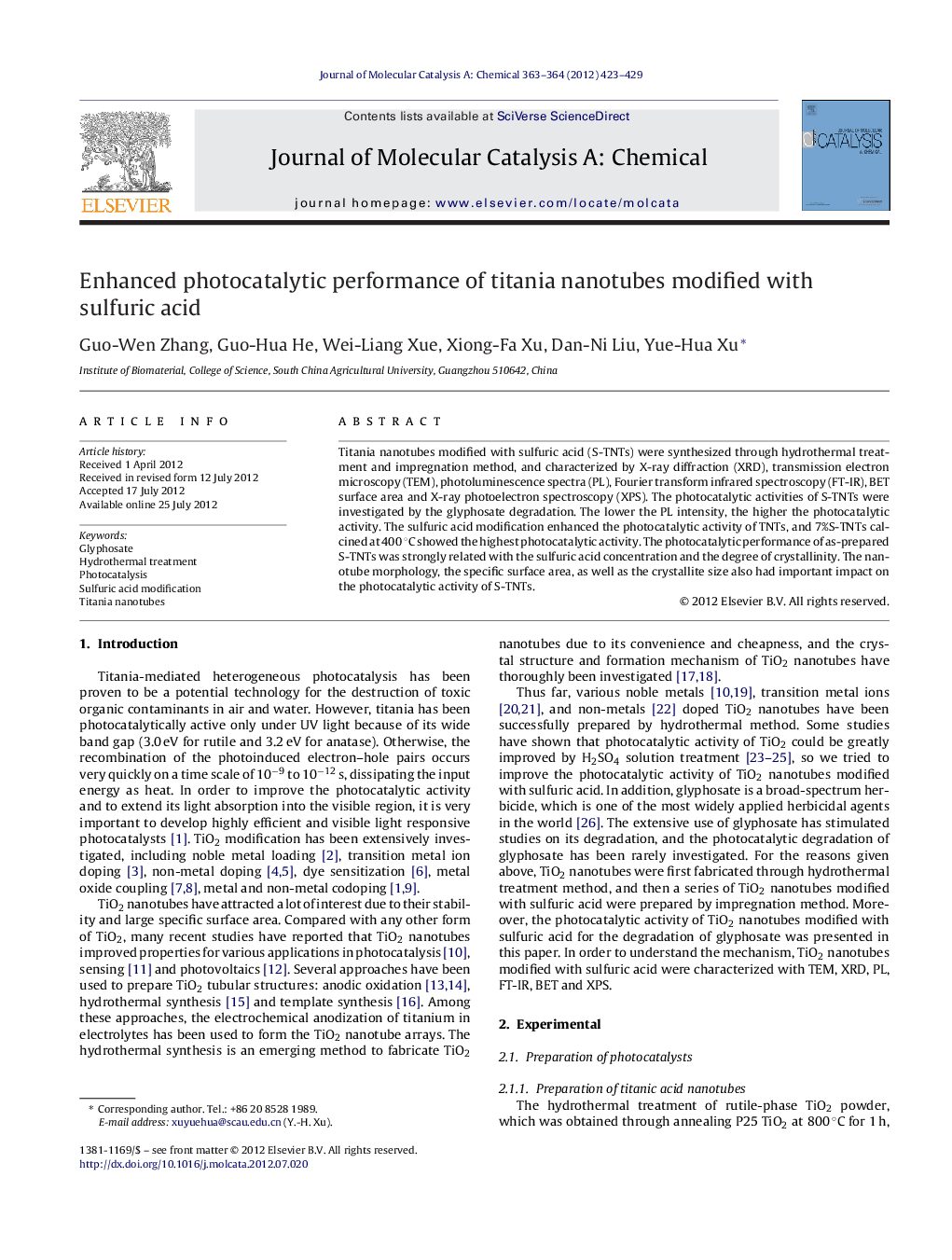| Article ID | Journal | Published Year | Pages | File Type |
|---|---|---|---|---|
| 66056 | Journal of Molecular Catalysis A: Chemical | 2012 | 7 Pages |
Titania nanotubes modified with sulfuric acid (S-TNTs) were synthesized through hydrothermal treatment and impregnation method, and characterized by X-ray diffraction (XRD), transmission electron microscopy (TEM), photoluminescence spectra (PL), Fourier transform infrared spectroscopy (FT-IR), BET surface area and X-ray photoelectron spectroscopy (XPS). The photocatalytic activities of S-TNTs were investigated by the glyphosate degradation. The lower the PL intensity, the higher the photocatalytic activity. The sulfuric acid modification enhanced the photocatalytic activity of TNTs, and 7%S-TNTs calcined at 400 °C showed the highest photocatalytic activity. The photocatalytic performance of as-prepared S-TNTs was strongly related with the sulfuric acid concentration and the degree of crystallinity. The nanotube morphology, the specific surface area, as well as the crystallite size also had important impact on the photocatalytic activity of S-TNTs.
Graphical abstractFigure optionsDownload full-size imageDownload high-quality image (175 K)Download as PowerPoint slideHighlights► Sulfuric acid modification had an influence on the microstructure of titania nanotubes. ► Sulfuric acid modification enhanced the photocatalytic activity of S-TNTs. ► Photocatalytic performance of S-TNTs was strongly related with the sulfuric acid concentration and the degree of crystallinity. ► Nanotube microstructure also had important impact on the photocatalytic activity of S-TNTs. ► Glyphosate on S-TNTs was effectively decomposed through photocatalytic oxidation.
